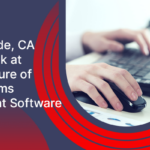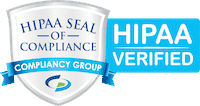Riverside, CA: A Look at the Future of Claims Management Software in 2024
July 25, 2024
Efficient claims management is a must for businesses looking to excel in the healthcare industry. Whether it’s healthcare, insurance, or any other industry dealing with claims, robust claims software can help improve accuracy, streamline processes, and improve customer satisfaction.
Choosing the right claims software needs careful planning and consideration. In this article, we’ll discuss the key steps to ensure to successful integration of a new claims management system.
1. Assess Your Business Objectives
Before understanding the selection process, it’s important to evaluate your business needs and identify pain points in your claims management process, such as inefficiencies, bottlenecks, or compliance issues. Set your objectives for implementing new software, whether it’s to improve accuracy, reduce processing time, enhance customer service, or attain regulatory compliance. By understanding your business needs, you’ll be able to cater potential solutions effectively.
2. Conduct Thorough Research
Once you’ve determined your business needs, perform thorough research to find potential claims software. You can consider factors like scalability, functionality, ease of use, vendor reputation, integration capabilities, and customer support. Explore testimonials, case studies, and reviews from other businesses to assess the efficiency of each solution. Moreover, it’s recommended to consult with industry peers to gain valuable insights.
3. Evaluate Features and Functionality
While considering the claims software options, prioritize functionality and features that align with your business needs. Common features to consider include:
- Claims Intake Automation
- Document Management
- Workflow Automation
- Customer Communication Tools
- Reporting and Analytics
- Integration with Third-Party Systems
- Compliance Management
- Mobile Accessibility
It’s always beneficial to create a checklist of features and evaluate each solution against these criteria to ensure its suitability.
4. Consider Integration Capabilities
It is recommended to integrate data sources and existing systems for seamless data accuracy and operations. Make sure that the claims software can be easily integrated with your organization’s other software applications, such as accounting software, CRM systems, or electronic health record systems. Smooth integration helps to decrease manual data entry, remove silos, and provide a more holistic view of claims data across your business.
5. Evaluate Vendor Reputation and Support
Choose a reliable vendor with a proven track record in claims management software. Research the vendor’s reputation, financial stability, and reliability. Evaluate their experience serving businesses similar to yours and ask about their customer support services, including training programs, implementation assistance, and ongoing technical support. Having robust customer support leads to a smooth transition and offers incredible support throughout the software lifecycle.
6. Plan for Implementation
Successful implementation of claims software needs proper coordination and planning. Develop a comprehensive implementation plan that outlines timelines, milestones, resource responsibilities, and needs. Assign a dedicated project team comprising key stakeholders from different departments, including IT, claims processing, operations, and customer service. Set clear goals and communicate them to all stakeholders for better commitment and alignment to the implementation process.
7. Provide Comprehensive Training
Effective training is important for the success of claims software. The training programs should be customized according to the different user roles within your company, including claims adjusters, customer service representatives, supervisors, and administrators. The software company must provide online tutorials, hands-on training sessions, user manuals, and ongoing support to help understand the new system quickly. It’s beneficial to address any concerns and encourage feedback promptly for an incredible learning experience.
8. Test and Iterate
Make sure to perform detailed testing of the claims software before deploying it across your business. This is essential to identify any bugs or issues. Test different scenarios, integration points, and workflows to ensure data accuracy and smooth functionality. By implementing feedback from users, you can easily make the required changes and ensure the software meets your business needs and provides the expected results.
9. Monitor Performance and Continuous Improvement
Once the claims software is up and running, it’s important to track its efficiency and performance. Track key metrics like accuracy rates, processing time, compliance metrics, and customer satisfaction to measure the impact of the new claims system. You can also use analytics and reporting tools to get valuable insights into trends, make data-driven decisions, and identify areas for improvement. Regularly analyze processes, user feedback, and workflows to find opportunities for optimization and improvement.
10. Stay Flexible and Adapt
Finally, it’s recommended to stay adaptable and flexible throughout the implementation process and beyond. The business landscape and regulatory environment are constantly evolving, so your claims management processes and software requirements may need to evolve as well. Stay informed about industry trends, technological advancements, and regulatory changes that may impact your business claims management practices. Constantly assess the quality of your claims software and be ready to make refinements as needed to stay compliant and competitive.
Conclusion
Implementing robust claims software needs thorough research, careful planning, and ongoing commitment. Make sure to follow these key steps to ensure a seamless transition to a new claims management system. Your business will reap the benefits and eventually gain improved accuracy, efficiency, and customer satisfaction.
7 Features Every Online Claim Management System Needs
June 27, 2024What to Look for in Claims Management Software?
May 8, 2024









